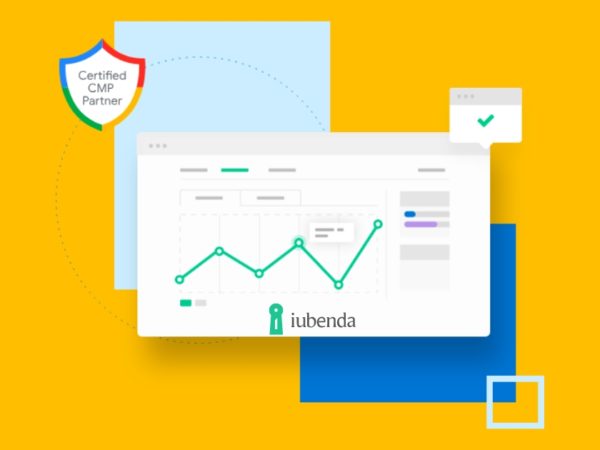Geekflare is supported by our audience. We may earn affiliate commissions from buying links on this site.
Every device connected to the internet or local network has an IP address.
Yes, even your smartphone, smart TV, and smart speakers have it. You might have heard about IP addresses, and you may have also seen how they look – those series of numbers separated by dots or colons.
An IP address is an address to which the information you request from the internet arrives.
For example, when you search for your favorite movie on the internet, the search engine takes a while to load the results and show them to you on the screen. A lot goes in the back that you can’t see. Without your IP address, your request will land nowhere.
That’s how important an IP address is.
So, let’s understand IP addresses in detail and some key information associated with them.
What Is IP?
To understand an IP address, it’s important to learn what IP is in the first place.
Internet Protocol (IP) is a set of governing rules for data packets, data format, or datagram sent through a local network or the internet. It is a connectionless and datagram-oriented protocol as it works on a dynamic computer network.
An IP works without a centralized monitor or directory and never relies on a node or link. Hence, each data packet must have the source and destination’s IP address and other key information to get delivered successfully.
What Is An IP Address?
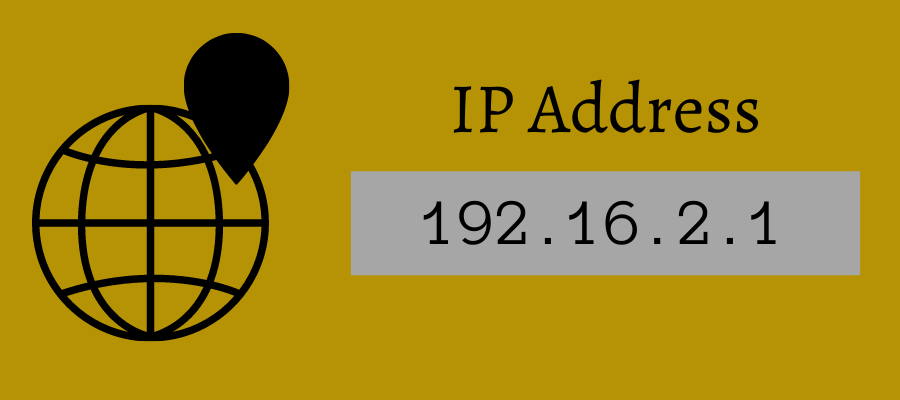
An Internet Protocol Address (IP address) refers to a unique address or numerical label designated for each device connected in a computer network using the Internet Protocol (IP) for communication.
Example of an IP address: 192.16.2.1
Simply put, IP addresses identify a device on a local network or the internet and allow data to be transmitted between the devices, containing location information while making devices accessible for easy communication. IP addresses offer a great way of differentiating between different devices like computers, printers, websites, routers, etc.
An IP address is used for two purposes:
- Location finding
- Identifying host/network interface
The Internet Assigned Numbers Authority (IANA) manages IP addresses globally. And, 5 Regional Internet Registries (RIRs) manage them in designated regions and assign them to local internet registries like end-users and Internet Service Providers (ISPs).
How Does An IP Address Work?
An IP address works in the same way as your house address does for you. If you want to receive a letter or a parcel from a courier, you need to give the sender your house address. Similarly, if you want to receive electronic mail or data from the web, your connected device or computer needs to have an internet address so that the sender can identify it and send the data.
Whether it is your computer, tablet, smartphone, smart lights, thermostat, baby monitor, or anything else connected to the internet, every device has to have an internet number or address to establish a connection and communicate with other devices using a set of guidelines or protocols.
This is why every site like Amazon or Netflix also consists of an IP address to communicate with you and send the information you requested. However, they keep a name instead of their IP address, for example, Amazon.com and Netflix.com, to help you find them easily. Otherwise, you had to type this long set of numbers for every site you visit. Names are easier to remember than numbers.
Now, you may ask how IP addresses are allocated to each device.
An IP address is not random; it is produced mathematically and allocated by the IANA.
In the above example of an IP address – 192.16.2.1, you can see that it is represented as a set of 4 numbers separated by a period. Each number can range from 0 to 255 in this set. So, the full range of IP addresses can go from 0.0.0.0 to 255.255.255.255.
Types of IP Addresses
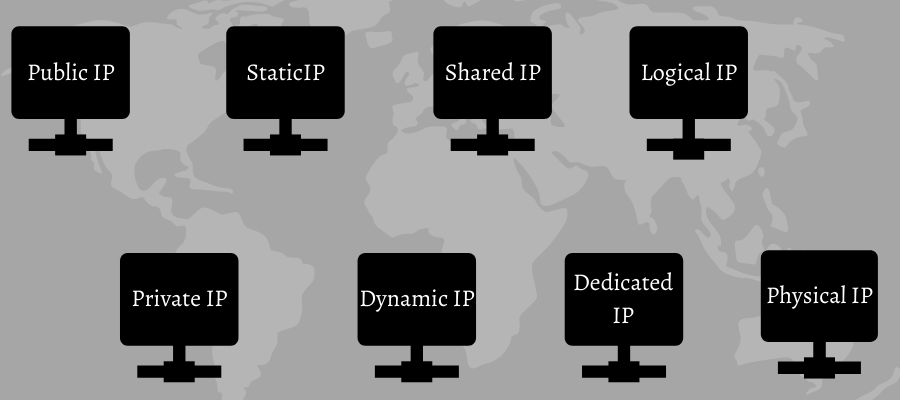
IP addresses are of different categories, each with different types.
1. Public and Private
A business or individual having an internet service has IP addresses of two types: private and public. These IP addresses are based on the network location.
- Private IP Address: It is used inside the computer network within your home or office. Every device (computer, smartphone, speakers, smart TV, etc.) connecting to your network consists of a private IP address assigned by your router.
As the usage of different devices is growing, the number of IP addresses at home grows with it. Hence, your router must find a way to detect these systems separately, which is why it generates unique private IP addresses for each of them, differentiating devices on your network. Devices outside the private network will not be able to access the private IP addresses.
- Public IP address: It is used outside your home or office computer network. Each device connected to the public network or internet will have its IP address assigned by the Internet Service Provider (ISP). ISPs have a wide range of IP addresses for customers, and they allocate a public IP address to your router.
External devices use public IP addresses to find your device over the internet. A public IP address is of two types: static and dynamic.
2. Static and Dynamic
- Static IP addresses: They are consistent and don’t change regularly or automatically. Once the ISP assigns it, the IP stays the same.
Every business or individual does not need a static IP address. But if you want to host your own server, you must have a static IP address. It ensures your email address and sites tied to a static IP address have the same IP consistently. As a result, external devices can find you easily on the internet.
- Dynamic IP address: These IP addresses change regularly and automatically, unlike static addresses. ISPs have a pool of unassigned IP addresses, which they assign to customers who sign in to their internet service. A customer uses the assigned IP address as long as they are connected to the internet. When the customer stops using the service or disconnects from the internet, the assigned IP address becomes free and returns to the pool of unassigned IP addresses. These dynamic addresses are re-assigned to other customers.
This approach saves ISPs costs, and they don’t need to perform specific tasks to re-establish a user’s IP address time and again. In addition, it also ensures security as changing IP addresses makes it difficult for hackers to zero in on one user.
We have earlier discussed static IP addresses for businesses wanting to own a server for their sites. Similarly, there are website IP addresses of two types as well.
3. Shared and Dedicated IP address
- Shared IP address: Website owners relying on a shared hosting service from a web host will get a server shared by other sites. It is suitable for small-scale businesses, bloggers, portfolio sites, etc., where traffic is less. They will have a shared IP address.
- Dedicated IP addresses: Larger sites are looking for a more secure option, and pro gamers who want better control over their servers can go for dedicated hosting plans. They can buy a dedicated IP address. It helps you obtain SSL certificates easily and lets you run your FTP server.
Hence, you can share files with different people securely within your organization or go anonymous. Furthermore, you can even access your site with your IP address instead of your domain name.
4. Logical and Physical
- Logical IP address: It is assigned by the software inside a server or router and may or may not change periodically. For instance, your laptop can have a different IP address if you connect it to another hotspot.
- Physical IP address: Every hardware unit is built with a unique IP address that never changes. This is a physical IP address. You can use a resolution protocol to convert a logical IP address to a physical one to identify a device in your IP network.
IP Versions: IPv4 and IPv6
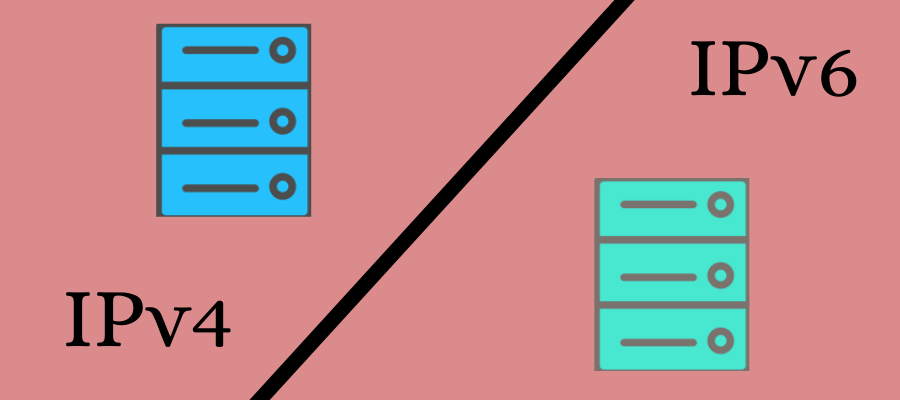
There are two versions of IP commonly in use – IPv4 and IPv6. Each version represents an IP address in a different way.
Internet Protocol Version 4 (IPv4)
The original IP version deployed in the Advanced Research Projects Agency Network (ARPANET) for the first time in 1983 was IPv4. It is used widely in many corporations. Due to its prevalence, the terminology “IP address” still commonly refers to those addresses that IPv4 defines.
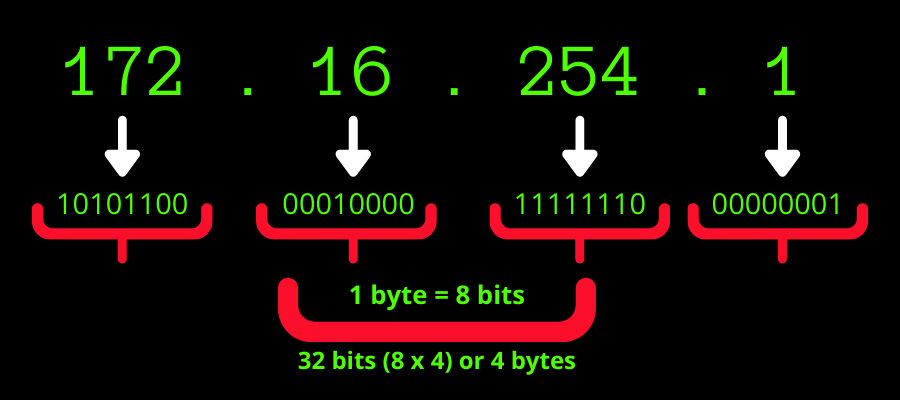
IPv4 represents an IP address in the form of a 32-bit number, consisting of 4 numbers separated by periods. Each number represents a decimal (base-10) for an 8-digit binary number (base-2) or octet. It allows IP addresses.
As explained earlier, each of the 4 numbers in an IPv4 address ranges from 0-255.
Example: 172.16.254.1, 192.16.2.1, 192.26.254.1, 172.0.16.0, etc.
Internet Protocol Version 6 (IPv6)
Due to the tremendous growth of the web, IPv4 addresses started depleting around the 1990s. As a result, the scarcity of IP address space became grave to assign them to the ISPs and end-users.
This pressurized the Internet Engineering Task Force (IETF) to innovate and explore technologies to extend the internet’s address capability. They eventually redesigned the IP as IPv6 in 1995. It went through a series of testing until the 2000s when its commercial deployment began.
In IPv6, the address space was increased to 128 bits or 16 octets (from 32 bits or 8 octets in IPv4). IPv6 is represented by 8 sets of 4 hexadecimal digits, where each number set is separated with the help of a colon and may contain letters and digits.
Example: 2001:0DB8:AC10:0000:0011:AAAA:2C4A:FE01
Yes, it’s super long, but some conventions help abbreviate them.
- You can eliminate leading zeros from a number group. For example – :0021: can be :21:
- Consecutive zeros can be written as a double colon, and it’s allowed only one in an IP address, provided you maintain 8 sections in it.

Image Source: Wikipedia
For example, 2001:0DB8:AC10::0011 would need you to add four sections of zeros instead of a double colon. It becomes, 2001:0DB8:AC10:0000:0000:0000:0000:0011.
The intention behind creating IPv6 is to expand the space and redesign routing by aggregating subnetwork routing prefixes more efficiently. It slowed down routing tables growing in the routers. It also changes the routing prefix of the whole network automatically. So, even if the routing policy or global connectivity policy changes, it won’t need manual renumbering or internal redesigning.
You may ask why IP versions 4 and 6, where are others between and after them? Here’s the answer.
In reality, other versions were defined, from versions 1 to 9, but only versions 4 and 6 found widespread use. Version 1 and 2 were TCP protocol names in 1974 and ’77 to separate the IP specification at that time. Moreover, version 3 was introduced in 1978, where v3.1 was the first ever version in which TCP got separated from IP. Next, version 5 that surfaced in 1979 was the experimental protocol – Internet Stream Protocol.
IPv6 is a combination of various versions – v6, v7, v8, and v9.
What Are Subnetworks and Classes of An IP Address?
Subnetworks
IP networks can be categorized into subnetworks for IPv4 and IPv6 both. Hence, an IP address has two parts:
- Network prefix in higher bits
- Host identifier (interface identifier or rest field)
Subnetworks involve a subnet mask or a CIDR notation to determine how an IP address is separated into the host and network parts. “Subnet” is the term used for IPv4 only. However, both versions utilize CIDR notation and concepts.

Image Source: Redhat.com
In subnets, an IP address has a slash at the end with the number of bits in decimal to represent the network part, also known as the routing prefix. Most subnet masks begin with 255 and end when the network part ends. Example: 255.255.255.0
Another example, suppose 172.0.2.1 is an IPv4 address, and 255.255.255.0 is its subnet. For this, CIDR notation can be 172.16.2.1/24. Here, the IP address’s first 24 bits represent the subnet and network.
IP Address Class
Initially, the network part had the highest-order octet. This approach allowed just 256 networks, which started becoming insufficient as more networks developed. It led to the revision of address specifications to introduce classful network design.
This design facilitated fine-grained subnetwork architecture and assigning a greater number of individual networks. In this, the first 3 bits of the most significant octet in an IP address represented the address “class.” And it defined 3 classes – A, B, and C.
Also, the IPv4 system allowed addresses between 0.0.0.0 and 255.255.255.255. But some numbers are reserved for certain purposes on TCP or IP networks. The IANA recognizes these reservations. They are divided into:
- 0.0.0.0: This is the default network that shows a device is connected to an IP and TCP network.
- 255.255.255.255: It’s for network broadcasts that must reach every computer connected to a network.
- 127.0.0.1: It’s for a computer to check whether it has got an AP address assigned or not.
- 169.254.0.1-169.254.255.254: It’s the Automatic Private IP Addressing (APIPA) with a pool of IP addresses automatically assigned on detecting that a computer is unsuccessful in getting an IP address from any DHFC servers.
- Other IP addresses belong to subnet classes.
As a subnet is itself a small computer network connected to a large network via a router, it can have an address system to facilitate communication between computers in its network without sending any data across the bigger network. Furthermore, a router can be configured to detect subnets and perform suitable traffic routing.
So, here are some of the reserved IP addresses for subnets or classes:
| Class | Leading bits | Number of Networks | Addresses per network | Total Addresses in Class | Range |
| Class A | 0 | 128 (27) | 16,777,216 (224) | 231 | 0.0.0.0 – 127.255.255.255 |
| Class B | 10 | 16,384 (214) | 65,536 (216) | 230 | 128.0.0.0 – 191.255.255.255 |
| Class C | 110 | 2,097,152 (221) | 256 (28) | 229 | 192.0.0.0 – 223.255.255.255 |
| Class D | 1110 | Not defined | Not defined | 228 | 224.0.0.0 – 239.255.255.255 |
| Class E | 1111 | Not defined | Not defined | 228 | 240.0.0.0 – 255.255.255.255 |
How to Lookup An IP Address?
If you want to check your router’s IP address, hop on to Google and ask what your IP address is. It will display the answer right at the top. It’s actually your public IP address.
You can refer to many other sites to obtain the same data. As you make a request using your router while visiting websites, they will have your IP information. You can go to IPLocation, WhatIsMyIP.com, WhatIsMyIPAddress.com, etc., to find out your IPv4 and IPv6 addresses and, perhaps, your location.
Also, if you are interested to know more information about an IP address you already know, here are some of the tools/sites you can use. They will help you find information about an IP address like location, city, ISP, owner, etc.
- IP Location Lookup: This is an easy-to-use tool that helps you get all the key information you need about an IP address. Just enter an IP address to see where it is located and who owns it. It will show you its country, region, city, and ISP.
- WhatIsMyIPAddress.com: This is another good site that will show IP information. Try copying and pasting an IP address in the search bar and hit the button next to it to find data like the hostname, ISP, organization’s name, the state/region, city, longitude, and latitude, area code, and known services it runs.
Now, why you would need information on other IP addresses?
A business can know others’ IP addresses to find the location where they are running their business. It is pretty common for advertisers, organizations, service sites, etc., to obtain IP address information for promotions, ads, and other purposes.
What are the ways to know others’ IP addresses or other people to know yours?
Here’s how:
- Through email HTML bugs, embedded code in an image to tell the sender you read the email along with your IP address.
- By borrowing a computer to find its IP address
- From your email address, web server logs, internet forums, blog comments, social media, and messaging apps.
- Via a court order to investigate online activity by the FBI and other legal bodies
However, you can mask your IP address using a Virtual Private Network (VPN) that routes you to another network using a different IP.
What Are Security Threats Related to IP Addresses?
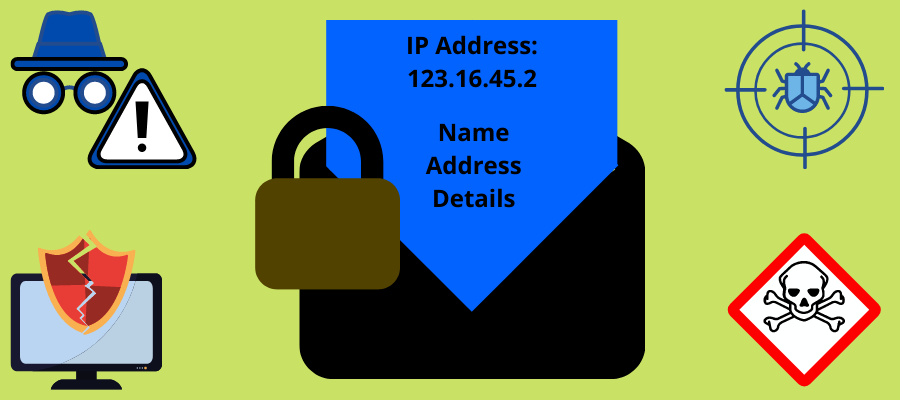
Due to various techniques available, cyberattackers are targeting IP addresses to inject their harmful intent. Threats related to IP addresses can be:
- Online stalking to get your IP address from activities like video games, comments on forums and sites, etc. to inject malware, impersonation, or phishing attacks
- Social engineering to find you via a messaging app like Skype, prompting you to reveal your IP address
There are risks involved when:
- Cyber Attackers track your location using geolocation technology
- Targeting your network directly to launch DDoS attacks
- Forced connection through ports to take over a device and steal data
- Downloading illegal content from your IP address
How to Protect Your IP Address?
If you can hide your IP address, you can protect your device, online identity, and data. There are two ways to go about it:
- Using a VPN is a safer option where your device acts like it’s on the same network locally as the VPN. Thus, you can safely access the network even from another country or browse geo-blocked sites. Example: NordVPN, Surf Shark, ExpressVPN, etc.
- Using a proxy server provides an intermediary web server through which your traffic gets routed. It masks your original IP address and shows the proxy server’s IP address. Example: Luminati, Oxylabs, Smartproxy, etc.
Conclusion 👩🏫
This discussion on IP addresses will you get started with the concept and explore its terminologies. It will also help you find your IP address and of others’ as well using some tools. Finally, you can learn to map the risks involved with IP addresses and how to mitigate them.



